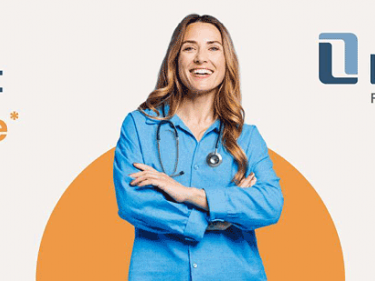Optimum Oral Health for Children and Teens
 Guest contributor and Marin County dentist Dr. Steven McConnell gives parents some tips on optimal oral health for children and teens.
Guest contributor and Marin County dentist Dr. Steven McConnell gives parents some tips on optimal oral health for children and teens.
Every parent wants his or her children to have optimum health. Fortunately, in dentistry we now know that optimizing oral heath actually improves our overall health. Although there have been countless articles about the link between oral health and overall health for adults, the reality is that the same holds true for infants, children, and teens as well. When the mouth is optimally healthy we are much more resistant to the numerous bacterial and viral infections that we have the potential to be exposed to every day. Common sense tells us that everything we eat and drink as well as the air we breathe all passes either through the mouth, or nasal passages.
All humans have a population of bacteria that inhabits this area, both good bacteria (important for proper digestion), and bad bacteria (causes gum disease and cavities). When the bad bacteria are allowed to proliferate, the delicate balance between good bacteria and bad bacteria is upset. If the mouth is not in healthy balance, the bad bacteria dominate the mouth, lowering the immune response and making us more susceptible to infection.
The important question then, is how do we best optimize oral health? The classic dental home care model, especially for children, is that the primary reason for brushing is to prevent cavities. Yes, preventing cavities is important, but all the current science and empirical evidence supports the fact that we are not only preventing cavities, but creating an optimally healthy oral environment.
One key concept is kids get gum disease too! It is commonly believed that only adults get gum disease. The reality is, children are equally susceptible. The biggest difference is that the more notable effects of gum disease, gum recession and bone loss, rarely show in kids. However, the same bacteria inhabit the mouths of children and can compromise the health of children just as it can for adults.
Just as with adults, it is important to have an accurate diagnosis by a dental health professional trained in modern concepts of treating gum/periodontal disease for adults and children. Based upon the diagnosis, it is critical to implement an oral health program that not only gets the mouth healthy but establishes a consistent routine for daily home care as well as appropriately timed visits for in office supervision and hygiene appointments.
We also know now through scientific and empirical evidence that newer home care techniques get amazing results. The sonic vibrations of the Sonicare toothbrush and the pulsing action of the WaterPik have been shown to disrupt bacteria past where your manual toothbrush and dental floss can reach, keeping the teeth and supporting tissues healthier in between hygiene appointments.
Home care recommendations for children:
- Birth to one year (approximately): Wipe the mouth with a fine washcloth or small gauze passing over the gums gently. This is easiest to do when bathing or before feeding. No absolute need for any sort of toothpaste but there are some cleansing gels that can be used for infants.
- 1–2 years of age (when they have some teeth): Continue to use the gauze or washcloth technique. As your child allows you, introduce the toothbrush. No toothpaste is needed. However, as you use the brush, realize it is important to not only brush the teeth but to also brush and stimulate the gums around the teeth.
- 2–3 years of age (by this time you should be using a brush full time): Introduce toothpaste. Training toothpaste that is fine for the kids to swallow is the best for first time use. We strongly recommend the use of Sonicare toothbrushes for our adults (all the evidence documents exceptional results) and we recommend introducing the same type Sonicare (the Sonicare for kids) as soon as your child allows you to use it, probably closer to age 3.
- 3–5 years of age: It is time to start introducing "regular toothpaste" and making sure your child knows how to rinse. If the teeth are close together, flossing is important to start as well. Even though children may want to do all the brushing on their own, it is best for an adult to monitor or actually do the home care. By age 3, at the latest, children should have their first dental visit to check the dentition, growth and development and review home care techniques.
- 5-7 years of age: Children are starting to lose their baby teeth and the first adult permanent teeth are starting to come into the mouth. Home care becomes even more important as does proper diet. Many parents like to use "disclosing solutions" to show their kids where they need to brush. Another good aid are small timers to make sure children are brushing long enough.
- 7–teenage years: Many kids will be starting orthodontic treatment at this time, some as early as age 7. Braces make it much harder to clean the mouth, however, it is of the upmost importance to do so. Braces can often cause excessive swelling of the gum tissue, creating a type of gum disease. This can cause a much higher susceptibility to decay as well.
Some of the most notable gum infection we see is often in teens. Because the more severe consequences of gum infection (recession and bone loss) rarely occur, gum infection in teens is often overlooked. However, gum disease at this age is as toxic to the body as it is at any age. The good news is, because the disease is not complicated by recession and bone loss, it is easier to correct and keep healthy. The biggest challenge is getting the cooperation of a teenager!
By the time all the permanent teeth finally erupt into the mouth, (sometime between 11 and 14) our philosophy is to treat teens as adults. With all the permanent teeth in place they have the same concerns about dental health that adults do. One of the biggest misconceptions has been that teens do not get gum disease. The reality is that they do and can benefit from optimum oral health just as any child or adult.
 Dr. Steven McConnell graduated from the University of the Pacific School of Dentistry, San Francisco. He is a certified specialist in restorative and cosmetic dentistry, and since 1978, the sole practitioner/owner of the Marin Center for Restorative & Cosmetic Dentistry in Novato.
Dr. Steven McConnell graduated from the University of the Pacific School of Dentistry, San Francisco. He is a certified specialist in restorative and cosmetic dentistry, and since 1978, the sole practitioner/owner of the Marin Center for Restorative & Cosmetic Dentistry in Novato.
Dr. McConnell's focus on overall oral health and esthetic dentistry demands highly specialized procedures using advanced technology. He provides services in full mouth rejuvenation, dental aging, smile makeover, bite analysis and unbalanced bite correction, periodontal disease prevention, dental implants, teeth whitening, veneers, and sedation dentistry. Performing digital x-ray in lieu of film and use of Cerec natural porcelain crowns rather than traditional laboratory-made product is a reflection of a green initiative he began in 2001. For more information, visit www.mcconnelldds.com.






